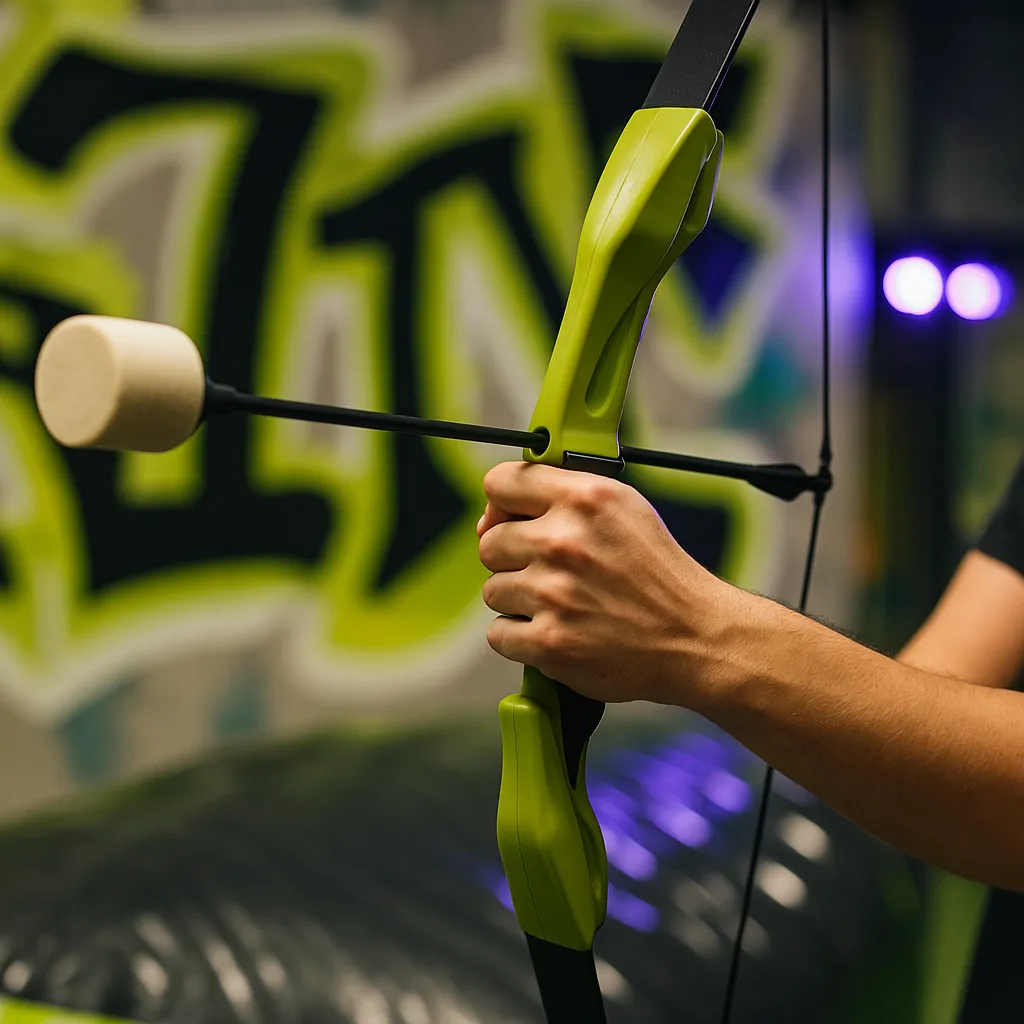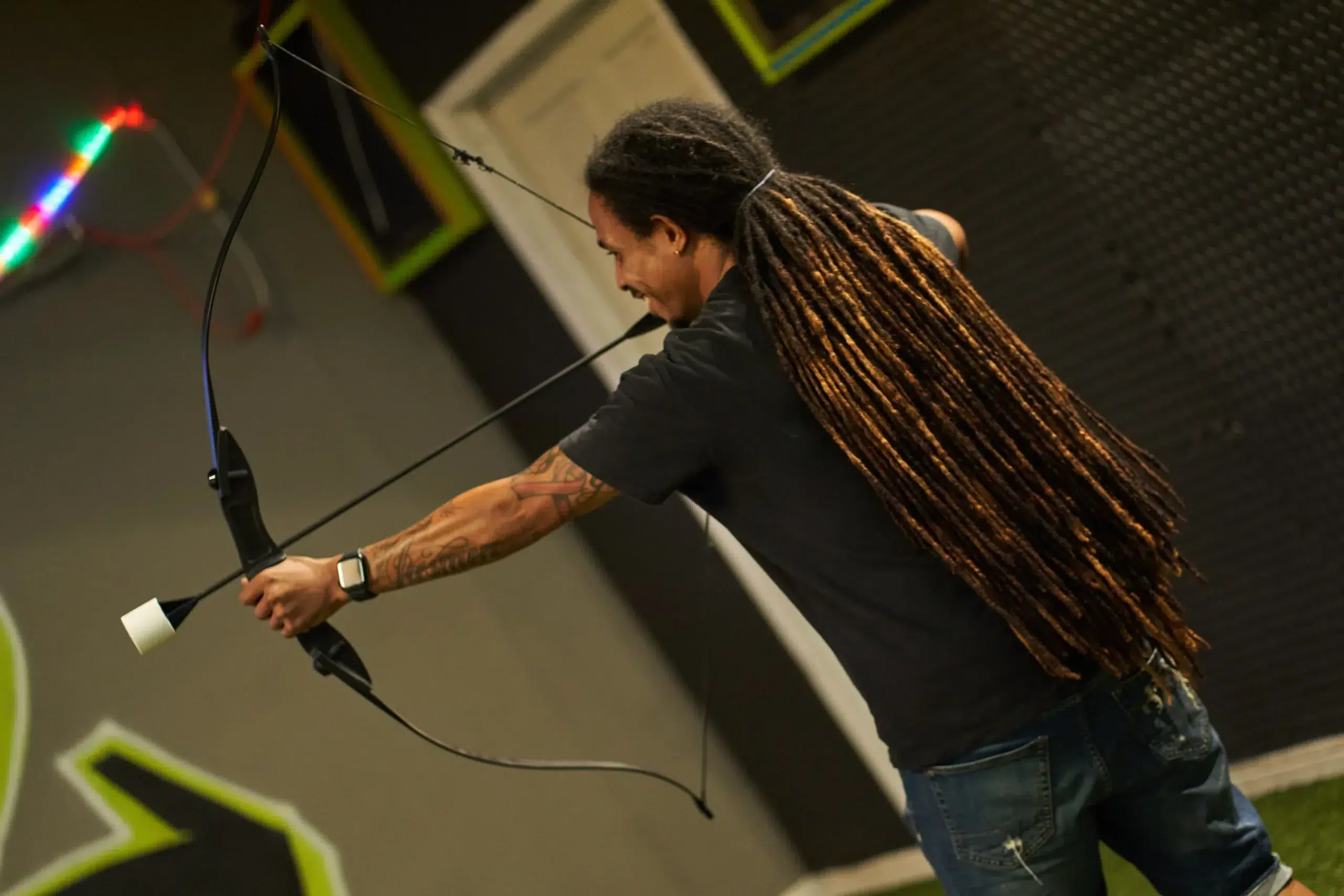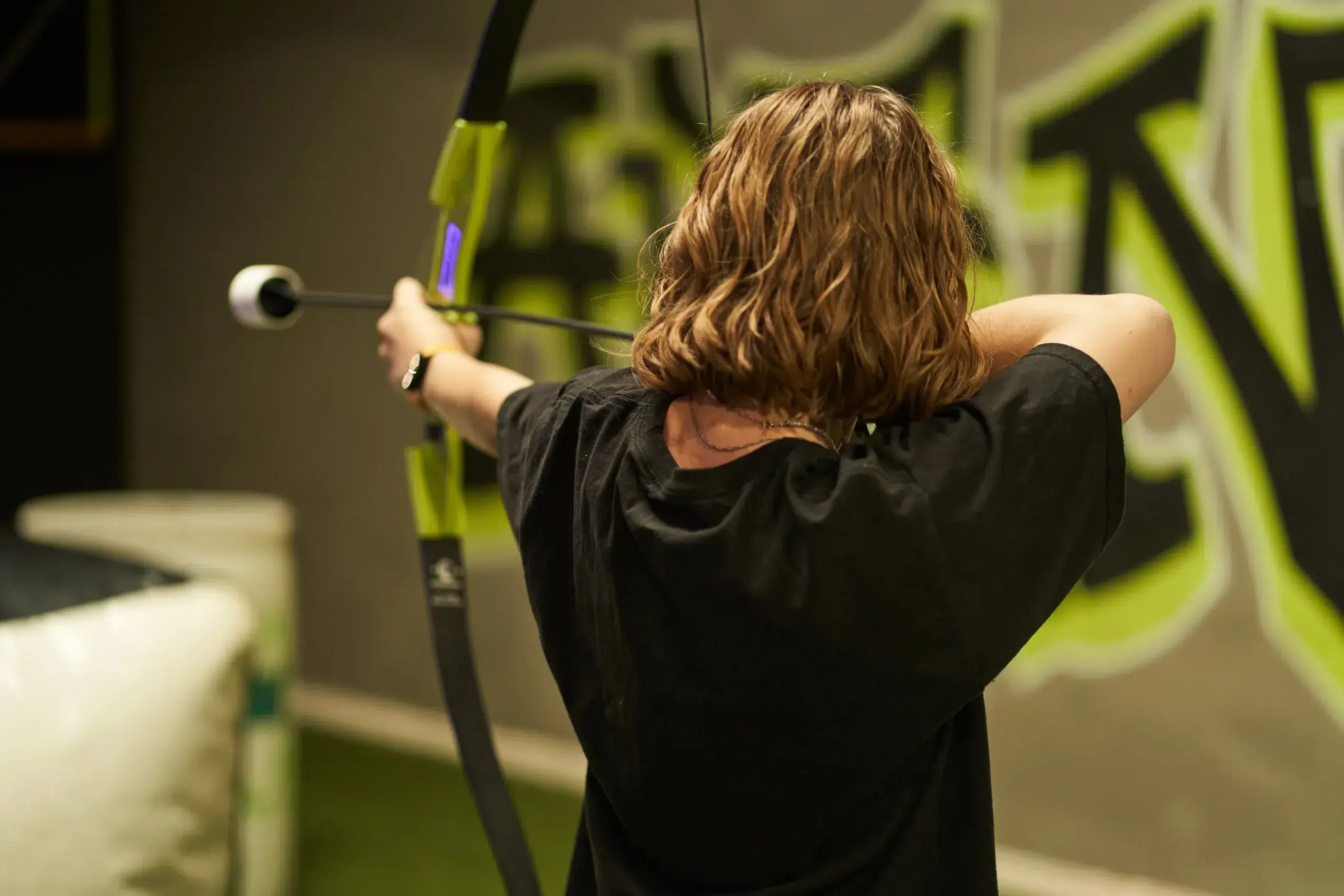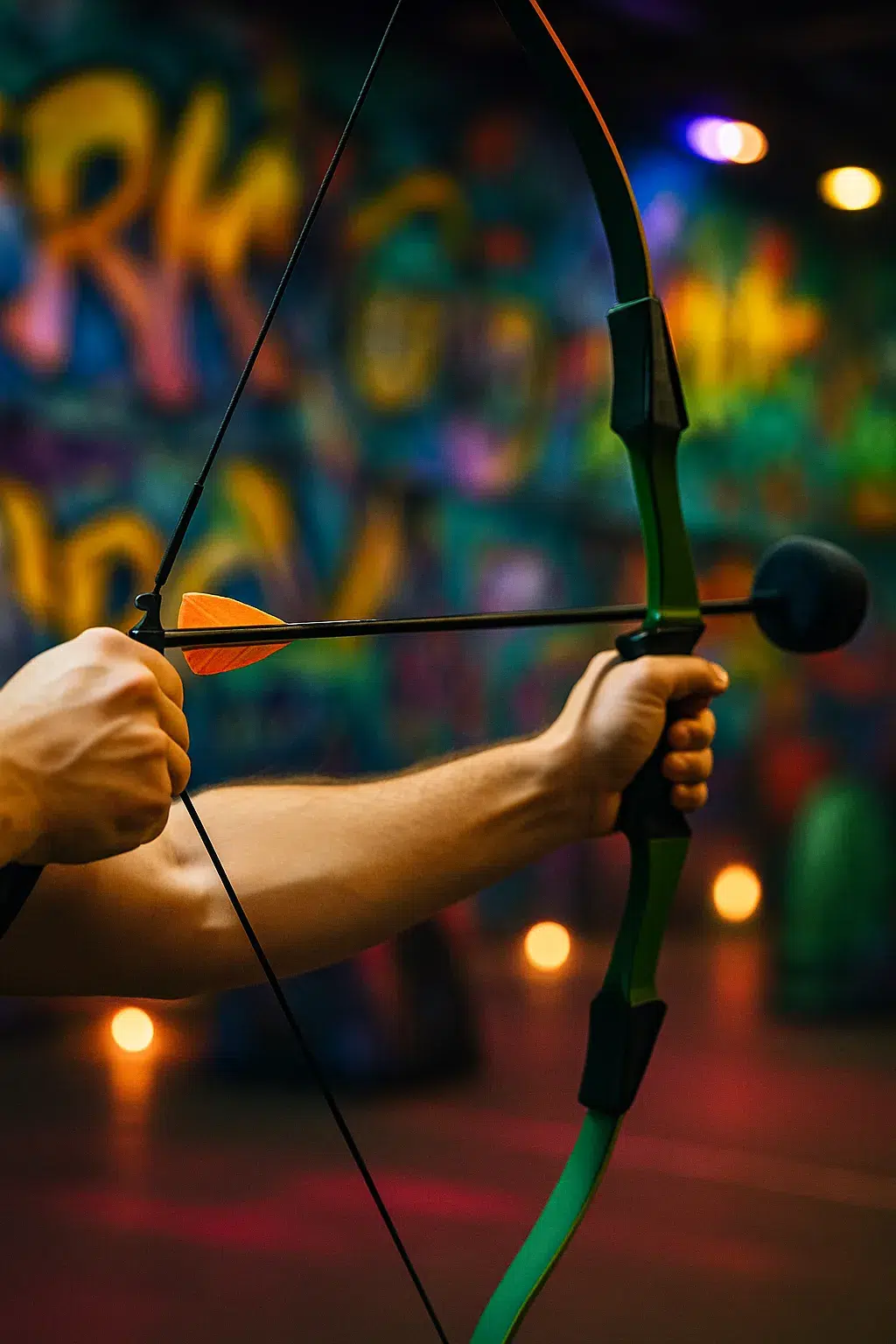Arrow Tag has quickly become a favorite among thrill-seekers, combining archery’s precision with fast-paced, team-driven action. With multiple match styles available, from solo survival to coordinated team battles, each offers its own excitement and strategic challenge. Whether you’re in it for casual fun, intense physical play, or mental agility, there’s a match type suited for every skill level and personality.
Understanding how each format works helps players select experiences that match their energy, play style, and goals. Each version comes with unique rules, scoring methods, and gear setups, offering new ways to enjoy this high-energy sport. From corporate team-building to youth tournaments, Arrow Tag’s versatility makes it a perfect fit for all types of events. Dive in to discover which match style gets your adrenaline pumping the most.
Key Takeaways
- Different Arrow Tag match styles impact game pace, tactics, and player interaction.
- Solo formats focus on speed and accuracy, while team formats prioritize coordination.
- Infrastructure, like arena design and obstacle placement, shapes gameplay strategy.
- Tactical roles and communication improve engagement and boost performance.
- Match variety keeps the game fresh, catering to different skill levels and preferences.
Understanding Arrow Tag: What Makes Each Match Style Unique

Arrow Tag isn’t just one game—it’s a collection of thrilling match styles, each offering unique dynamics that impact gameplay, equipment, and strategy. From team-based tournaments to solo showdowns, each format appeals to different player goals, whether it’s camaraderie or personal skill. Knowing what sets each style apart helps players choose their ideal experience.
Team vs. Solo: How Match Formats Change the Game
Team-based matches emphasize collaboration, communication, and synchronized strategy. Players take on roles like attackers, defenders, or medics to execute plays effectively. In solo formats, quick reflexes and independent decision-making reign supreme. Each match type taps into different strengths, giving every player a way to shine.
Different Rules, Different Thrills: How Gameplay Adjusts
Scoring methods, match objectives, and time limits vary across styles. Some games reward tactical takedowns and defensive play, while others prioritize speed and precision. Whether you’re capturing flags, defending zones, or simply eliminating opponents, the changing rule sets keep the action fresh and replayable.
Equipment Differences by Format
Team formats may standardize gear to ensure fairness, while solo matches often allow personalized bows and arrow weights. Some styles use dynamic props like moving targets or inflatable barriers. These equipment differences influence movement, aim, and risk, making each game a different kind of adrenaline rush.
Comparing Key Features of Popular Arrow Tag Formats

Every Arrow Tag match has its own pace, scoring logic, and field layout. These features shape how the game plays out and determine what kind of fun each group might enjoy, from competitive leagues to casual family days. Knowing these elements helps match styles to players’ energy levels and goals.
Scoring Systems That Shape Strategy
Some matches award points for tagging out opponents, others for capturing zones or completing objectives. Strategic formats might reward support roles like revivers or defenders. Each scoring method adds variety and dictates how players approach offense, defense, and teamwork.
Field Layout and Obstacles: The Game’s Physical Puzzle
Field design changes everything. Open layouts are better for fast solo runs; obstacle-rich fields support tactical team maneuvers. From indoor rooms to outdoor arenas with inflatable cover, the layout changes how players plan routes, use cover, and coordinate actions.
Time-Based vs. Objective-Based Rounds
Some formats have timed matches where the team with the most points wins when the buzzer sounds. Others end once objectives are met, like hitting all targets or capturing flags. Each format brings its own level of pressure, pacing, and player energy use.
Types of Arrow Tag Matches and What Sets Them Apart

Arrow Tag offers a variety of match formats that cater to different player preferences, experience levels, and group dynamics. Each style presents unique pacing, tactical demands, and team setups, allowing for flexible gameplay options. Some matches focus on accuracy and reflexes, while others emphasize coordination and teamwork. Understanding the distinct match types helps players select the right format for casual fun or competitive challenges. Let’s explore what defines these exciting formats and why they matter.
Classic Elimination Matches: Fast-Paced and Team-Focused
In elimination-style games, players are removed from play when struck by an arrow. The objective is simple: be the last team standing. These matches require constant movement, communication, and defensive tactics. Players must use barriers and dodge skills to avoid being tagged, while also coordinating shots with teammates. Because teams get smaller over time, strategy must evolve mid-game. This style is perfect for larger groups and builds strong team chemistry. It’s the most common match type for corporate team-building sessions.
Team Domination Mode: Strategic Zone Control
In domination-style Arrow Tag, the goal isn’t just tagging players—it’s about capturing and holding specific zones on the field. Teams must coordinate to defend their territory while launching attacks to claim enemy zones. Success hinges on strategic movement, role assignments, and timing. Holding a zone for longer durations scores more points, so defense is as important as offense. The format rewards long-term planning and teamwork. It mirrors control-point modes in video games and adds a layer of tactical depth.
Individual Free-for-All Challenges
This solo match style turns up the intensity. Every player competes independently, and alliances quickly fall apart as the pressure builds. It tests reflexes, stealth, and shot accuracy, offering little room for error. Players must rely on personal skills and quick decisions, often dodging multiple attacks at once. The fast-paced format forces constant repositioning, especially in crowded arenas. Great for smaller groups or warm-up rounds, free-for-all matches appeal to competitive individuals. It’s chaotic, challenging, and deeply rewarding.
Tactical Approaches Unique to Each Match Type

Each Arrow Tag format demands a specific tactical mindset. Players must adjust their play style depending on whether they are in solo or team-based games. For optimal performance, knowing when to take cover, when to strike, and how to coordinate with allies is key. Tactical planning begins before the match starts, often shaping the outcome significantly. Let’s break down the most effective strategies for each match format.
Communication and Role Assignment in Team Matches
In team-based modes, success depends on clarity and coordination. Assigning roles—like attackers, defenders, and flankers—allows players to focus on their strengths. Communication is vital for syncing movements and reacting to opponents’ plays. Verbal cues, hand signals, or designated leaders can streamline strategy. Pre-game planning helps anticipate enemy tactics. When players stick to their roles, the team operates smoothly under pressure. This style builds trust and reinforces strategic cooperation.
Mobility and Stealth in Solo Free-for-All Games
In individual matches, you’re on your own, so staying mobile and undetected is crucial. The best players use stealth, unpredictability, and cover to survive and score. Aggressive tactics can backfire without support, so subtlety becomes your best friend. Solo players benefit from quiet movement and sudden ambushes. Constant scanning and quick reactions help you anticipate threats. Solo matches reward adaptability and instinct, making them mentally demanding. Positioning is everything—never stay in one place too long.
Zone Rotation and Defense in Domination Matches
Domination-style games need smart zone control. Teams must rotate between offensive pushes and defensive holds. Assigning zone captains or rotating defenders creates flexibility and minimizes vulnerability. Splitting the team between offense and defense ensures consistent pressure. Strong defenses can frustrate opponents and create counter-attack opportunities. Strategic retreats and reorganization between zones can reset momentum. Teams that adapt faster tend to control the tempo and win. It’s a match of endurance, awareness, and planning.
Engagement Levels and Benefits of Different Match Styles

Different match styles offer varying levels of player engagement, influencing physical activity, strategic thinking, and social interaction. Some formats prioritize speed and action, while others highlight planning and teamwork. The emotional and physical benefits of each style depend on game structure, pacing, and communication. Engagement also affects team morale and spectator entertainment. Understanding these dynamics helps players choose a format that matches their goals.
Strategic Depth in Team Competitions
Team matches are often the most immersive, as they require ongoing communication, planning, and quick adaptation. Players must constantly adjust roles and respond to changing team dynamics. The focus on teamwork promotes problem-solving, cooperation, and shared leadership. Success isn’t about individual heroics, but how well a team operates as a unit. This dynamic creates lasting engagement and strong camaraderie among players. Teams often debrief after matches, learning together. It’s an ideal style for bonding and collaboration.
High-Intensity Action in Solo Formats
Solo Arrow Tag matches turn up the adrenaline. With every player acting alone, the pace is faster, and the pressure is higher. Every decision—whether to shoot, dodge, or run—must be made instantly. The non-stop motion keeps both body and mind active. Players hone their reflexes and improve their personal focus. It’s an intense workout wrapped in competitive fun. Those who love a physical challenge often prefer this format. It’s great for building resilience and quick decision-making skills.
Mixed Engagement in Domination Formats
Domination matches balance action and strategy. Players switch between high-octane moments and tactical pauses as they defend or rotate through zones. This ebb and flow of intensity keeps things engaging without leading to burnout. The role rotation allows everyone to experience different aspects of the game, whether it’s sniping, defending, or capturing zones. These mixed dynamics appeal to a wide range of players. This format often leads to balanced satisfaction across skill levels. It’s perfect for mixed-age or mixed-experience groups.
Frequently Asked Questions
Which Arrow Tag match style is best for beginners?
Team-based formats are great for beginners because they emphasize teamwork, communication, and shared strategy, making it easier to learn while playing.
How long do typical Arrow Tag matches last?
Matches usually last between 10 and 15 minutes, depending on the format and rules. Some events include multiple rounds with short breaks in between.
Do match styles affect the safety of gameplay?
Yes. Some styles require more barriers or larger fields, influencing safety setups. However, all formats follow core safety protocols, especially with foam-tipped arrows and protective gear.
Can I switch match styles during an event?
Many venues offer multiple formats during a session. You can usually switch between styles between rounds, depending on the event schedule and group preferences.
What equipment changes between match styles?
While the bow and foam arrows remain consistent, some formats allow gear customization or introduce special roles that require different gear, like shields or extra padding.
Conclusion
Arrow Tag’s variety of match styles ensures that no two games ever feel the same. Whether you’re looking for strategy-heavy team formats, fast-paced individual challenges, or dynamic mixed modes, each brings something unique to the experience. The game’s adaptability allows it to shine in casual play and competitive settings alike.
By understanding the differences between match styles, players can tailor their gameplay to their strengths, fitness level, and group dynamics. It’s more than just dodging and shooting—it’s about communication, timing, and staying one step ahead. As arenas evolve and new styles emerge, Arrow Tag continues to grow as a fan-favorite in modern recreation. Whatever your skill level or play style, there’s a match format that will get your heart racing and your team cheering.

